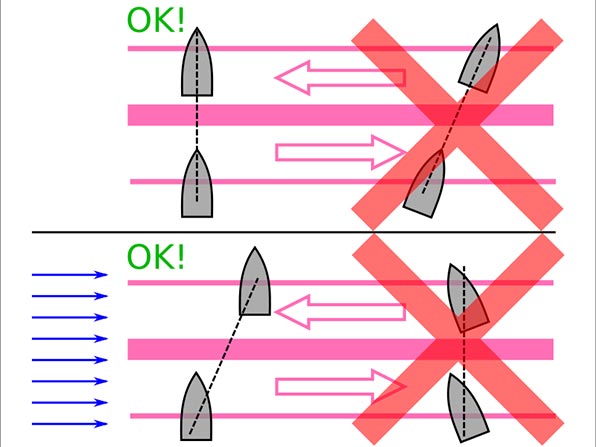A bit like the old video game Frogger
Are you familiar with a what a Traffic Separation Scheme is? Unless you’ve had some formal nautical instruction, you may not be, as they don’t exist everywhere. If you do find yourself sailing in an area that has one though, it’s important that you understand how they work, and the rules governing them. Being run over by a fast moving ship would not make for a good day!

From Wikipedia:
TSSs are used to regulate the traffic at busy, confined waterways or around capes. Within a TSS you normally see at least one traffic-lane in each main-direction, turning-points, deep-water lanes and separation zones between the main traffic lanes.
The traffic-lanes (or clearways) indicate the general direction of the ships in that zone; ships navigating within a TSS all sail in the same direction or they cross the lane in an angle as close to 90 degrees as possible.

I used to enjoy this video game!
Not long after we departed the Las Perlas islands with Two Fish, making our way with the rest of the World ARC fleet towards the Galapagos, we, and many of the other boats, found ourselves in a situation where we needed to cross a TSS. Jason, of course, knew the proper way to do this, at a right angle, and Two Fish’s AIS made it easy to judge our CPA (closest point of approach) to the multiple ships that were speeding along in their respective lanes. It was obvious from some of the radio traffic that ensued that at least two of the ARC boats did not understand what they should be doing. One of the sailboats actually told a fast moving ship that they could not alter course because… they were sailing!!!

For the record, the COLREGS rules governing Traffic Separations Schemes (Under Part B, Section I, Rule 10- Traffic Separation Schemes) state:
- Ships must cross traffic lanes steering a course “as nearly as practicable” at right angles to the direction of traffic. This reduces confusion and enables that vessel to cross the lane as quickly as possible.
- Vessel entering a traffic separation scheme should do it at an angle as small as practicable.
- A traffic separation scheme does not relieve any vessel from complying with other rules.


I understand the lanes, similar to flying actually. However, the crossing of the lanes was unknown to me. So, good to know , as they say!!
Hate it when I’m, ” that guy”!!
Fred
Yes, don’t want to be that guy!
And please don’t forget about Rule 10(j) either. As a small boat, you have no right of way.
In short, those traffic separation schemes are no fun place for cruisers.
Yes.
http://www.nepia.com/media/73241/Colregs-Rule-10-Traffic-Separation-Schemes.PDF
As always from ZTC – a useful and interesting article.
Now go out and find a copy of the game Frogger. 🙂
Here you go.
https://sites.google.com/site/unblockedgamesbolich/frogger
🙂
On the bottom diagram of the bottom picture, I wouldn’t have intuitively known that one. I assume that you can cross the lane faster when you aren’t trying to fight the current?
I’m guessing fighting the current slows you down?